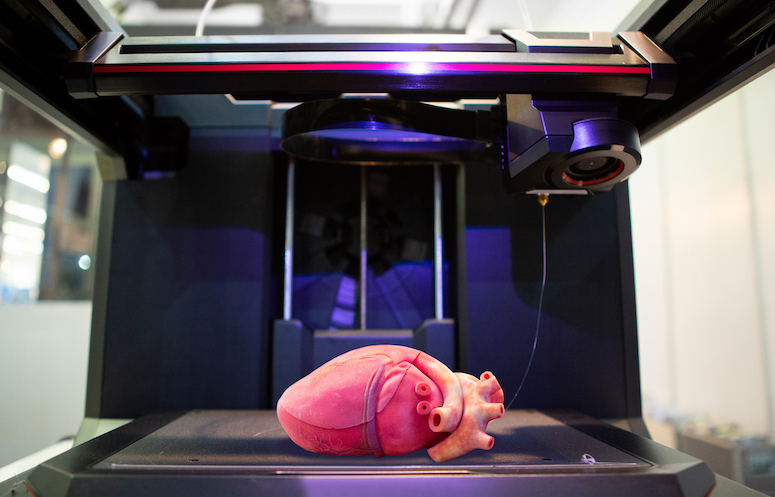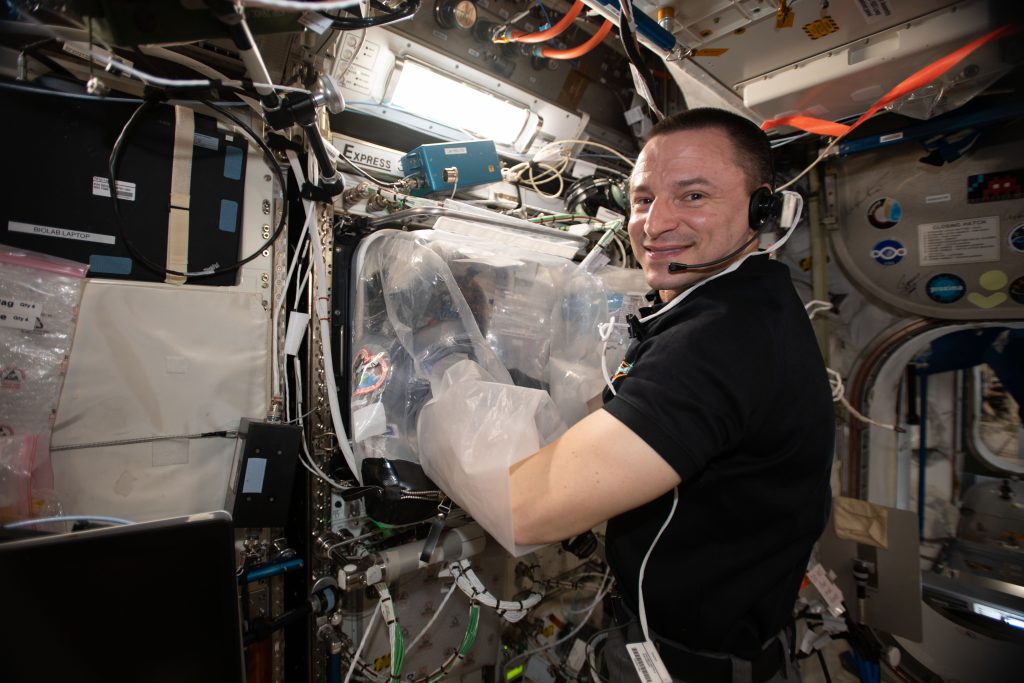Researchers have considered the idea of using 3D-printers to manufacture human organs for several years now. There is even an episode of “Grey’s Anatomy” where one of the doctors successfully prints and transfers a portal vein into a patient. In 2014, a company called Organovo successfully engineered 3D-bioprinted livers and kidneys using live human cells and tissue. However, there has yet to be an official transplant operation performed on a human with printed organs. With the number of patients requiring an organ transplant increasing every year, researchers are hopeful that 3D-printing organs will become a successful and cheaper alternative to regular organ transplants, and with the help of astronauts, this dream might become a reality.

What is Organ Bioprinting?
So how do you exactly make a 3D-printed organ? According to a 2019 study conducted by Xiohong Wang, “organ bioprinting is the use of 3D-printing technologies to assemble multiple cell types, growth factors and biomaterials in a layer-by-layer fashion to produce bioartificial organs that ideally imitate their natural counterparts”. The doctor would obtain a cell or tissue sample from the patient, and would grow that sample in an incubator in the lab. They would then feed the cells nutrients and combine them with a gel to act as a kind of glue. Then, the mixture is loaded into the printer like filament and used to print the organ layer by layer. The printers are able to be programmed to each patient’s specific measurements and requirements using their X-rays and other scans. While this method has yet to be approved and tested on humans, there have been successful cases of skin transplants on animals. Scientists say we still have over a decade to go on bioprinting research and testing before these organs can be transplanted into humans, but when we are successful, the benefits would be remarkable. Every year, only a small percentage of patients on the organ transplant list end up receiving the organ they need to live, while the others continue to wait another year or sadly, pass away. Since the organs will be grown from a patient’s own cells, there would be no need to wait years for a perfect match. They would be able to have a perfectly unique organ grown in a matter of days. Even if a patient is able to receive a transplant of their required organ, they are still at risk for rejection, which could put them right back on the transplant list. By printing organs with the individual’s own cells, the body will not see it as a foreign object and the risk of organ rejection could be eliminated once and for all. Another remarkable benefit of bioprinting is the potential to eliminate animal testing for skincare and cosmetics. Beauty brands can use human cells to grow their own skin tissue to test their products without harming animals and acquire more accurate results. L’Oreal has already partnered with Organovo to pioneer bioprinting testing in the beauty industry.
So Where do the Astronauts Come in?

While bioprinting research is picking up, there are still many challenges that prevent this technology from reaching its potential any time soon. One of the common issues in bioprinting is the need to create a type of scaffold to hold the organ together while it is printing. Even with regular plastic 3D printing, you have to include a support structure to help maintain the shape and precision of your design as it prints. These support structures are then removed after the design is complete. When printing organs, precision is extremely important and unless it has the proper support structure that can be easily removed, they have a tendency to collapse under gravity’s influence. This is why Andrew Morgan, a battlefield doctor for the US Army decided to conduct bioprinting experiments during his time at the International Space Station where gravity is not a problem. During his 272-day space experience in 2019, Morgan used the bio fabrication technology to “test prints of cardiac-like tissue of increasing thickness”. His team then froze their research samples and brought them back to Earth for further analysis. Space travel for the sake of research is not cheap though, so researchers are investigating a way to conduct similar low-gravity experiments here on Earth in the upcoming years. While the team was only able to print tissue samples while in space and their results may seem minuscule in the grand scheme of the end goals of bioprinting, Morgan’s research is one small step in the timely race towards a medical breakthrough.